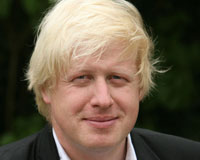 Of all the things that today bear his name, none is so redolent of Prince Albert as the Victoria & Albert Museum in the heart of what was called Albertopolis. More than just a museum, the V&A was meant to be part of a process of educating the British people in the importance of beauty and the connection between culture and everyday life and business.
Of all the things that today bear his name, none is so redolent of Prince Albert as the Victoria & Albert Museum in the heart of what was called Albertopolis. More than just a museum, the V&A was meant to be part of a process of educating the British people in the importance of beauty and the connection between culture and everyday life and business.
Prince Albert sought to exalt and unify his three interests: science, industry and art. Science needs industry to be of any value; industry needs art to produce products that are pleasing. It made perfect sense for him to collocate scientific, artistic and cultural institutions: the Royal College of Art; the Royal College of Music; the Natural History Museum; Imperial College.
Their total contribution to British GDP and their legacy are astonishing – and they are themselves the legacy of that glorious moment when London brought the world together and showed off this city and this country in the Great Exhibition of 1851. This was a commercial, technological and spiritual success, a moment of national self-confidence – a euphoria of the kind we experienced in the summer of 2012.
Our objective today is to create a legacy as outstanding as that of 1851. Two years ago, we looked at Stratford. We were inaugurating Europe’s largest new green park, we had Westfield’s shoppers, we had the country’s best-connected railway station and had squared away use of all the venues. We were ahead of any other Olympic city. We could see the property values rising around the park and we knew we had to create the jobs, the economic activity, to go with the housing being built.
So we decided to create an Olympicopolis to the east to take inspiration from Albertopolis in the west. And we could go with the flow to the east of artists, designers and techies as they spread out from Hoxton and Shoreditch through Hackney to Newham and Tower Hamlets.
By creating the right cycle links and by integrating the park properly with Hackney Wick we can turn the Olympicopolis into an area of scientific, academic, cultural, artistic and creative activity. UCL is building a £270m campus and the world’s top 300 architects are competing to design a cultural centre. We will welcome Sadler’s Wells, the University of the Arts, a new V&A East and possibly the Smithsonian Institution from Washington.
We all know the immense cultural and creative influence of the mighty V&A. Look no further than your iPhone – its designer, Jony Ive, forged his aesthetic in Chingford and at the V&A. Apple’s vast success is proof of Albert’s insight into the fundamental relationship between art and industry.
Our ambition must be that one day some young person will take inspiration from something there to create not just a brilliant design but a brilliant British company as well. In six years I believe we will have an intellectual, cultural and artistic legacy that would have impressed Albert himself.
This is an abridged version of this year’s Sackler Lecture, delivered by the mayor at the V&A on 29 January










